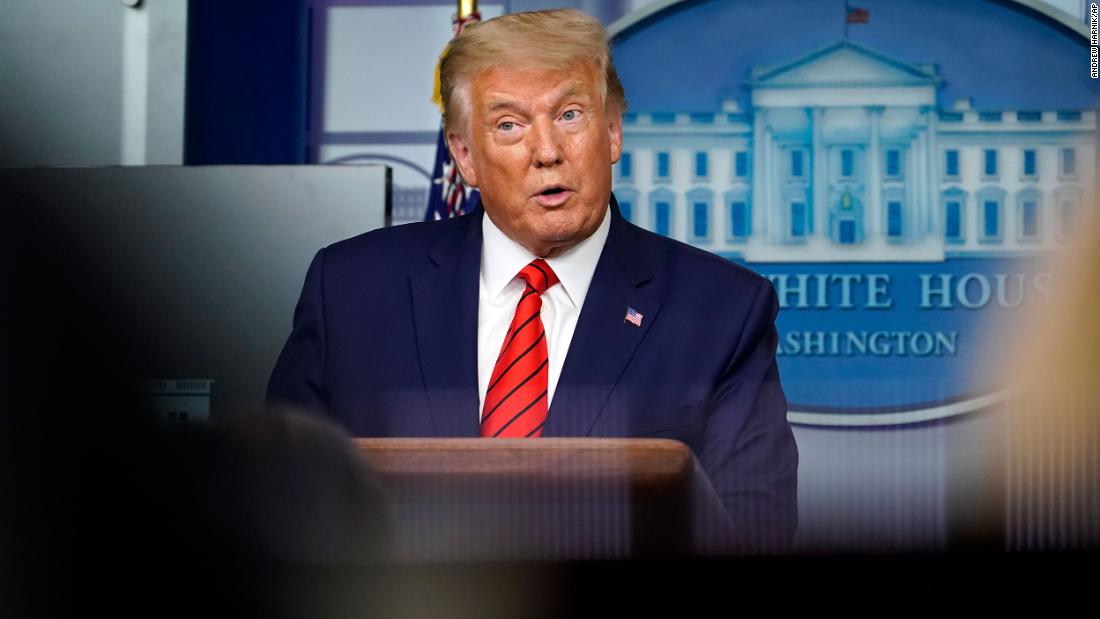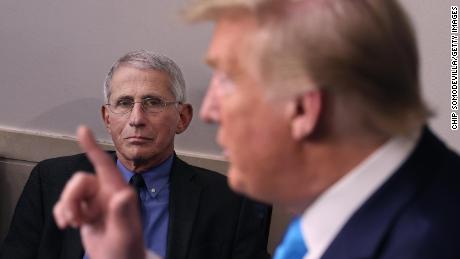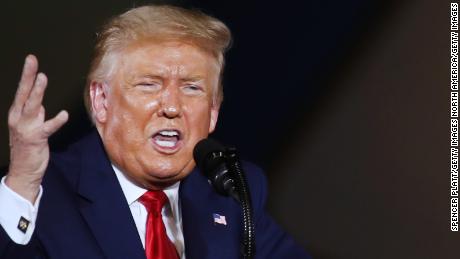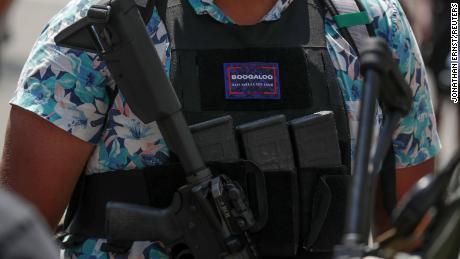Analysis: Trump justifies violence. Here’s why
Dismissing the notion that his appearance at a raw moment might increase violence, the President said, “it could also increase enthusiasm and it could increase love and respect for our country.”
“They want to destroy our country. They’re going to destroy our suburbs,” he said during an appearance in the White House briefing room mislabeled as a “news conference,” not even bothering to hide his goal to scare voters in affluent White areas around swing state cities into believing that Biden would bring political unrest that would shake America to its foundations.
Distracting from the pandemic
Trump’s day of fury reflects how he has now firmly settled on a campaign of demagoguery to save his presidency.
In a characteristic piece of projection, he accused Biden — who earlier condemned violence from all sources — of using Mafia talking points and Democrats of stirring disorder with “dangerous rhetoric.”
“It was a terrible, terrible thing to witness,” Trump said. His alarmism was expressed in a rant that resembled a highlight reel of conservative media buzz words and conspiracy theories including “radicals,” “maniacs,” “Antifa,” “looters,” “arsonists” and “fascism.”
In a classic authoritarian tactic, Trump also vastly over stated the extent of lawlessness and political violence, then promoted himself as the kind of strongman needed to restore order. And he tipped his hand over his new campaign tactic by opening his appearance with a boast about the stock market and a perfunctory mention of the pandemic that brought the country to its knees. Then it was on to his real topic: “left-wing political violence.”
In one sense, Trump’s gambit has already succeeded. He has moved the ground of the election away from the Covid-19 crisis and the multiple political corruption scandals that have clouded his term from day one. House Speaker Nancy Pelosi, however, made an attempt to wrest the conversation back to Covid-19, using an interview on MSNBC to accuse the President of saying to Americans “choose me over your child” as some kids go back to school without the testing infrastructure and needed safety precautions.
On Monday, Biden left his campaign-from-home bubble in Delaware to travel to Pittsburgh to parry Trump’s attacks amid increasing nervousness among Democrats that the President’s hardline approach could lift him back into a race in which he is trailing.
The Democratic nominee pointed out the flawed logic behind Trump’s approach, given that the unrest hitting cities in Minnesota, Oregon and Wisconsin is unfolding, after all, on the President’s watch.
“The violence you’re seeing in Donald Trump’s America. These are not images from some imagined ‘Joe Biden’s America’ in the future. These are images from Donald Trump’s America today,” Biden said.
In a sign that he intends to maintain his aggressive push back — and that he has no intention of being “swift boated” as happened to 2004 Democratic nominee John Kerry — Biden’s team said that he hoped to travel to Kenosha soon.
How Kenosha frames the stakes in the election
Biden also used his speech to move beyond the issue of violence in cities in an attempt to frustrate the President’s effort to make law and order the key issue in the election. While accusing Trump of “rooting for chaos and violence,” Biden said Trump’s failings on the pandemic, on foreign policy and even on Social Security had made Americans much more vulnerable.
“Do you feel safer and more secure now?” Biden asked in a repeating refrain.
A Biden trip to Wisconsin would bookend Trump’s own visit to the Badger State. The White House has said that it has tried to make contact with the family of Jacob Blake, the Black man shot seven times in the back by police in an incident that triggered unrest last week. Blake is still in hospital and local police have offered few explanations for the incident. The fact Trump and the family have not connected appears to indicate there is no desire to meet the President. Biden and his running mate, California Sen. Kamala Harris, have spoken at length with Blake’s family over the telephone.
The President plans to meet law enforcement officers in Kenosha and to survey damage from nights of unrest. He is claiming he ordered National Guard troops into the city to quell rioting and restore order. But in reality, Democratic Gov. Tony Evers had already activated the troops before Trump called for their intervention.
The political controversy over Kenosha is turning into a microcosm of the election in one of the most hotly contested districts in one of the most contested states.
“Once again, I urge the President to join me in saying that while peaceful protest is a right — a necessity — violence is wrong, period. No matter who does it, no matter what political affiliation they have. Period,” Biden said in a statement.
“If Donald Trump can’t say that, then he is unfit to be President, and his preference for more violence — not less — is clear.”
![]()








